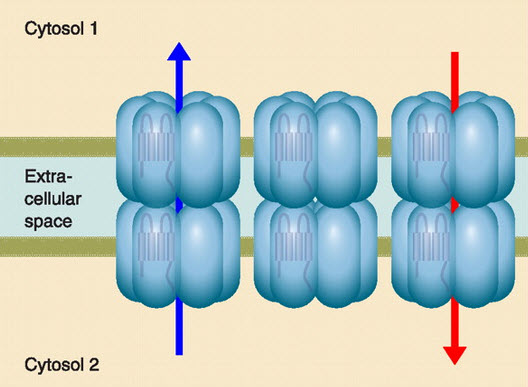
Okay, I’m about to put my scientific nerdiness on display. I spend a lot of time on PubMed researching topics to help my patients and I came across this article. I have been saving it for a while to do a post on, because it struck me as profound.
It is called The Gap Junction Channel Protein Connexin 43 is Covalently Modified and Regulated by SUMOylation and is from the Journal of Biological Chemistry, May 04, 2012.
In reading this article, it made me realize how complex our bodies really are and how little we still know about how everything works. Looking at the body from a microscopic level is almost like watching a science fiction movie.
This article focused on Connexin 43, which is a Gap Junction Channel Protein. Connexin 43 is just one of many of these proteins that are being studied. I didn’t even realize these specific proteins existed. Gap junction channels are formed by these membrane proteins that link together to make tunnels which connect between adjacent cells. According to the article, “Gap junctions are intercellular (between cell) plasma membrane domains containing arrays of channels that provide exchange of ions (like sodium, potassium, etc.) and small molecules between neighboring cells. Gap junctions have fundamental roles in excitable tissues by allowing electrical transmission between adjacent cells. Gap junction channel proteins are also expressed in nearly all cell types in non-excitable tissues and have critical roles in development, growth control, differentiation, and metabolic homeostasis. Dysregulation of gap junctional intercellular communication has been linked to multiple human diseases, including heart failure, deafness, skin disorders, and neuropathologies. There is also substantial evidence that loss of cell-cell communication via gap junctions is involved in cancer development.”
The researchers involved in this article know something about cancer. They are from the Department of Cancer Prevention, Institute for Cancer Research at Oslo Norway University Hospital, the Centre for Cancer Biomedicine, Faculty of Medicine, University of Oslo, and the Department of Molecular and Tumor Pathology, Akita Japan.
The importance of this system cannot be overstated. This vital system has fundamental roles in numerous cellular processes, including DNA repair, transcription, cytoplasmic nuclear transport, signal transduction, trafficking of membrane proteins including potassium channels, influencing insulin like growth factor receptors, cell growth, electrical properties of cells and chromosome separation. And, as scientists are constantly finding new associations. Most likely this is just the tip of the proverbial iceberg.
To think that there are these specific proteins (of which they have identified multiple versions with specific functions), that link together and dock to adjacent cells to form channels between them, allowing transport of essential components between the cells is really quite remarkable. And, realizing that there are trillions of cells where this process is constantly going on automatically 24/7, is mind blowing! It is humbling to realize that there is an innate or intelligent life force running all of these vital and complicated processes in our bodies night and day. This is just one example of millions of these types of complex and coordinated activities that our bodies are constantly orchestrating. And without these mysterious and vital activities, we could not exist. Thank God (as Psalm 139 says), we are so fearfully and wonderfully made!